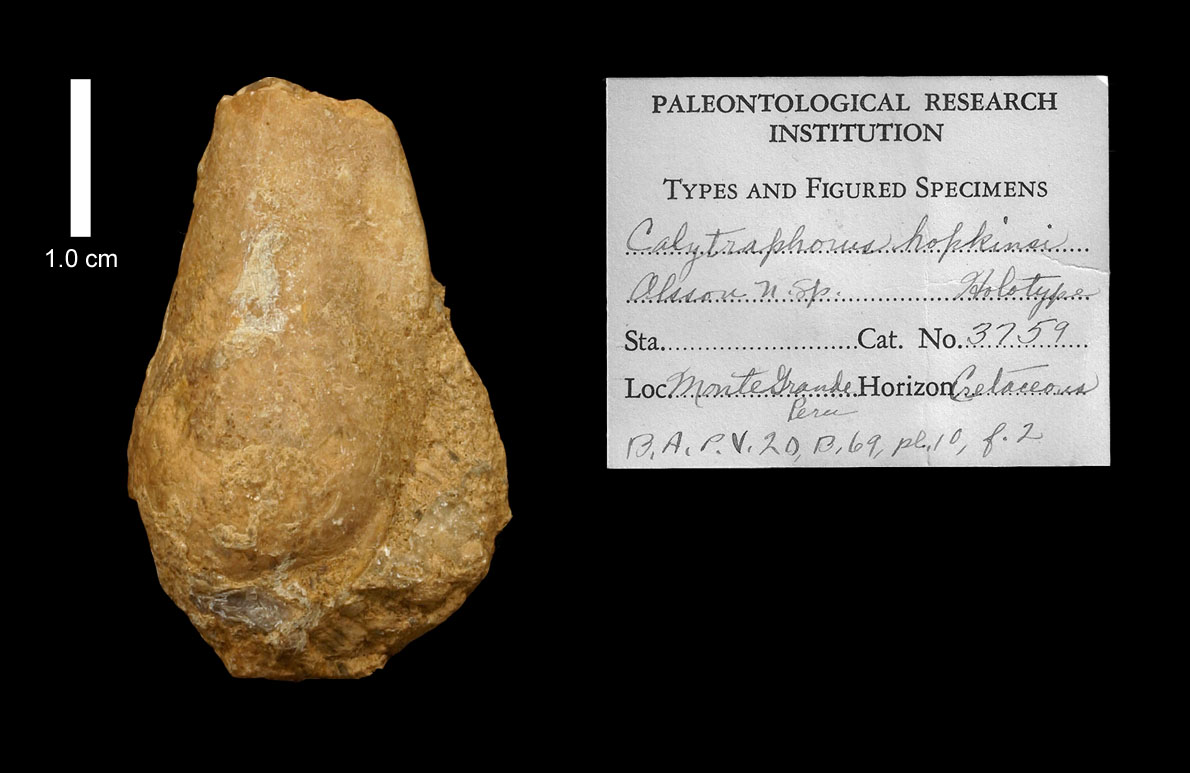Species / Calyptraphorus Hopkinsi
Stromboidea
Original Description of Calyptraphorus hopkinsi by Olsson, 1934. p. 68:
- "Shell of medium size, subfusiform; spire long, acute, composed of severalwhorls with the sutures concealed by a film of callus; the body-whorl of medium size with the anterior canal a little shorter and more tapering than the spire; aperture narrow, ending at the upper end in a posterior canal which is continued to the tip of the spire and then down the opposite side to the middle of the body-whorl; due to the extension of the posterior canal, the whorl section appears to be compressed or flattened; surface smooth, with a small rib or fold developed on the back of the body-whorl; with the callus film removed, the spire-whorls are seen to be ornamented with straight, widely spaced, fold-like ribs; these ribs are nearly in line or extend across the sutures; there are 10 ribs to each turn, strongest on the earliest whorls but disappear before reaching the penultimate; spirals absent."
Locus typicus: Monte Grande, Piura Department, Peru (Lat. 4* 28' S.; Long. 81* 4' W.)
Stratum typicum: Monte Grande Formation, Maastrichtian, late Cretaceous
Calyptraphorus hopkinsis Olsson, 1934; Holotype; Monte Grande Formation, Maastrichtian, late Cretaceous; Monte Grande, Piura Department, Peru; 38,7 mm; Coll. Paleotonlogical Research Institution no. 3759; Image reproduced courtesy of the Paleontological Research Institution.
References:
- Olsson, A.A., 1934: Contributions To the Paleontology of Northern Peru: the Cretaceous of the Amotape Region, Bulletins of American Paleontology 20(69), pl. 10, fig. 2

